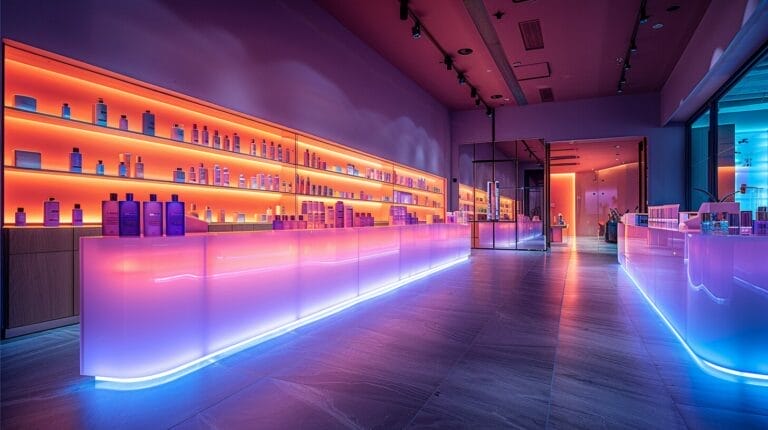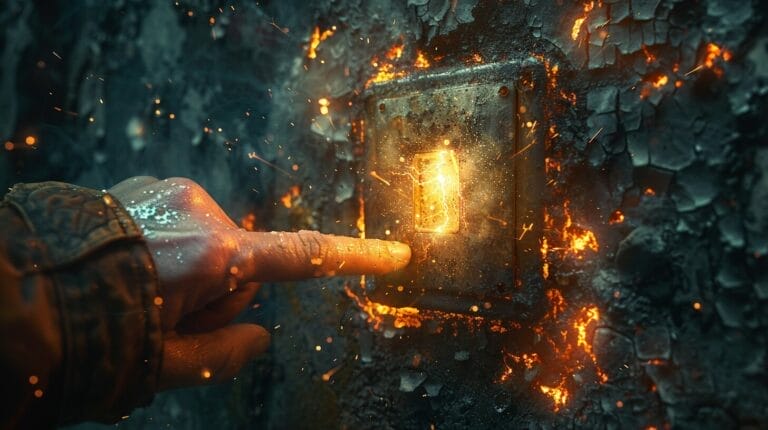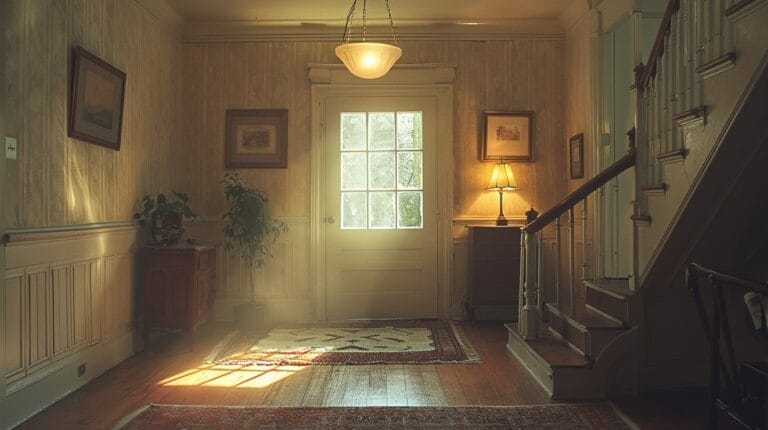What Color LED Lights Help With Headaches? Lighting Remedies
We’ve all experienced how certain lights can either soothe or aggravate our headaches. Surprisingly, research suggests that green LED lights might be the key to alleviating migraine pain and symptoms. Unlike the harsh blue light from our screens, which often triggers headaches, green light has a calming effect. But how exactly does this work, and are there specific ways we should be incorporating green LED lights into our daily routines to maximize their benefits?
Let’s explore the science behind this intriguing remedy and discover practical applications for our spaces.
Key Takeaways
- Green LED lights are effective in reducing migraine and headache symptoms.
- Blue LED lights tend to trigger and worsen headaches.
- Red LED lights show mixed results and can sometimes exacerbate headaches.
- White LED lights can occasionally trigger headaches.
- Proper placement and controlled exposure to green LED lights can offer headache relief.
Understanding the Connection Between Headaches and Light Sensitivity

Light sensitivity often plays a significant role in triggering headaches and migraines. For many dealing with chronic migraines, sensitivity to light is a substantial trigger that can exacerbate symptoms.
Various types of light — green, blue, and red — affect us differently, influencing the severity and frequency of our headaches. Research highlights that blue light emitted from screens and electronic devices can be particularly harsh on our eyes, leading to increased discomfort and migraine episodes. Red light often intensifies the throbbing pain associated with migraines. However, green light appears to be the least likely to trigger or worsen headaches. Some studies even suggest that exposure to green light reduces the intensity of migraine pain.
Understanding these nuances helps us manage our environments better. By being mindful of our exposure to different light sources, we can potentially minimize our headache triggers and improve our quality of life.
The Influence of Different Colors of LED Lights on Headaches

The type of LED light colors we’re exposed to can significantly impact our headache symptoms. Green light therapy has shown promising results in reducing migraine symptoms, proving to be a beacon of hope for chronic pain sufferers. By limiting light exposure to green wavelengths, we can experience a substantial decrease in headache intensity.
Conversely, blue LED lights are notorious for triggering migraines and increasing headache severity. This type of light exposure can be particularly harmful, highlighting the importance of minimizing our interaction with blue LEDs.
Red LED lights have shown mixed results. Some studies suggest they might help, while others indicate they could worsen the situation. Here’s a snapshot of how different LED light colors affect us:
- Green Light: Reduces migraine and headache symptoms
- Blue Light: Triggers and worsens headaches
- Red Light: Mixed results; effectiveness varies
- White Light: Can cause discomfort and trigger headaches
How to Use LED Lights Effectively for Headache Relief

Maximizing the benefits of LED lights for headache relief requires understanding the correct placement, duration, and brightness settings. Strategically placing LED lights in areas where we spend significant time, such as near our workstations or living spaces, ensures consistent exposure and maximizes potential relief.
Green light exposure has been shown to reduce headache intensity. By integrating green LED lights into our environment, we can potentially lessen pain. It’s also crucial to determine the ideal duration for exposure, with short, controlled sessions of 30-60 minutes often offering relief without overstimulation.
Adjusting brightness is another critical aspect. Each person’s sensitivity varies, so it’s advisable to start with a lower brightness setting and gradually increase it to find a comfort zone. This personalized approach ensures that LED lights are effective without causing additional strain.
Possible Side Effects and Considerations of Using LED Lights for Headaches

While LED lights can offer headache relief, it’s important to be aware of potential side effects and considerations. LED lights may cause discomfort if used incorrectly, and we must balance their benefits against possible risks.
- Eye Strain: Prolonged exposure to LED lights, especially at high intensity, can lead to eye strain. This can sometimes exacerbate headaches rather than treat them.
- Importance of Intensity Control: The intensity of LED lights plays an essential role in their effectiveness. Too bright, and it could worsen the headache; too dim, and it may not provide the desired relief.
- Exposure to Green Light: Although green light is known to help with headaches, overexposure can still lead to discomfort. Moderation is key.
- Individual Sensitivities: Each person’s reaction to LED lights can vary. Some might find relief, while others could experience adverse effects, making it essential to monitor and adjust usage accordingly.
We should also consider who should avoid using LED lights for headaches. People with photosensitivity or certain eye conditions might find these lights more harmful than helpful. By staying informed about these potential side effects, we can better harness the innovative potential of LED lights to treat headaches effectively.
The Role of LED Lights in Managing Headaches

LED lights have become a vital tool in managing headaches. Through innovative light therapy, we can explore how different colors impact our pain levels and overall well-being.
Research indicates that specific colors, such as green, can provide significant relief from headache symptoms. Green LED lights, in particular, have shown potential to reduce the intensity and frequency of headaches, offering a non-invasive, drug-free solution.
Red and blue lights can sometimes exacerbate headache symptoms, making it essential to choose the right color for effective relief. By incorporating green LED lights into our environments, we can potentially mitigate the discomfort associated with headaches.
As we embrace this cutting-edge approach, we must also consider the importance of continued research. Future studies will likely delve deeper into the mechanisms by which LED lights provide headache relief and investigate new ways to optimize light therapy for individual needs.
Conclusion
To sum up, we’ve found that green LED lights can greatly help reduce headache and migraine pain, while blue and white lights often worsen them. By strategically incorporating green lights into our environments and controlling their intensity and exposure, we can manage headaches more effectively.
Let’s remember to stay mindful of potential side effects and adjust our lighting accordingly to create a more headache-friendly space. Together, we can take proactive steps towards better headache management.
Frequently Asked Questions
Can LED lights help with headaches?
LED lights can help reduce migraines and headaches for some individuals. The color of the light, brightness, and flicker of the LEDs are all factors that may play a role in relieving headaches.
What color of LED lights may help with headaches?
Research suggests that green light therapy works well in helping to reduce migraines and headaches. Green light is considered beneficial for migraine sufferers and may even help prevent or alleviate migraine attacks.
Do different LED colors have varying effects on headaches?
Yes, the color of the light emitted by LEDs can have different effects on headaches. For example, warm or amber light is often preferred as it does not cause as much strain on the eyes as bright white light.
How can LED lights be used in a treatment plan for headaches?
LED lights can be used to create a calming environment to help relax individuals experiencing headaches. Utilizing the right color and brightness of LEDs can aid in reducing pain and discomfort associated with headaches.
Can exposure to bright lights, including LEDs, cause or worsen headaches?
Yes, exposure to bright artificial lights, including LEDs, can trigger or exacerbate headaches in some individuals. It is important to find the right balance of lighting to avoid discomfort.







